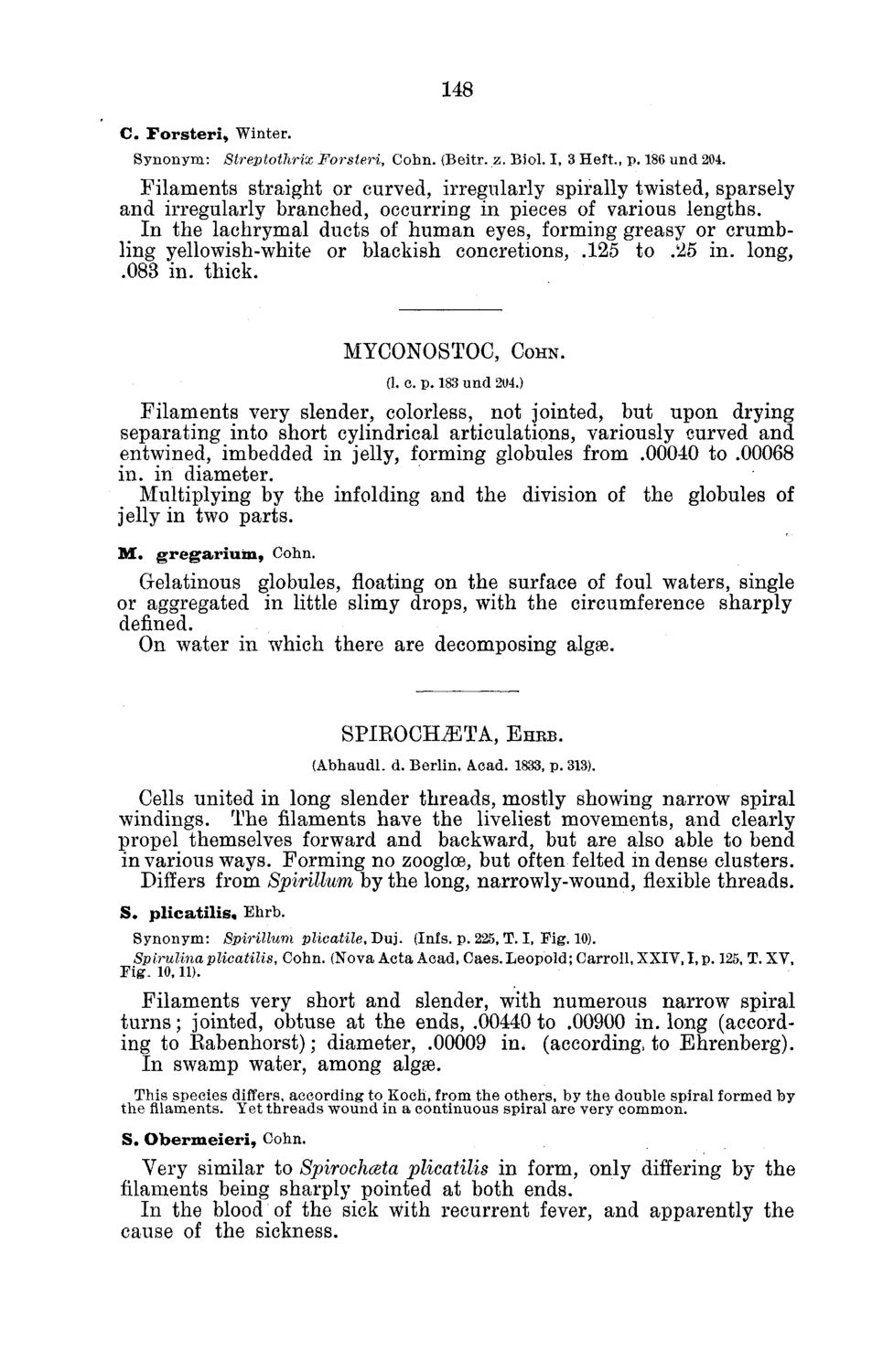| |
| |
Caption: Board of Trustees Minutes - 1882
This is a reduced-resolution page image for fast online browsing.

EXTRACTED TEXT FROM PAGE:
148 C. F o r s t e r i , Winter. Synonym: Streptothrix Forsteri, Cohn. (Beitr. z. Biol. I, 3 Heft., p. 186 und 204. Filaments straight or curved, irregularly spirally twisted, sparsely and irregularly branched, occurring in pieces of various lengths. In the lachrymal ducts of human eyes, forming greasy or crumbling yellowish-white or blackish concretions, .125 to .25 in. long, .083 in. thick. MYCONOSTOC, COHN. (1. c. p. 183 und 204.) Filaments very slender, colorless, not jointed, but upon drying separating into short cylindrical articulations, variously curved and entwined, imbedded in jelly, forming globules from .00040 to .00068 in. in diameter. Multiplying by the infolding and the division of the globules of jelly in two parts. M . g r e g a r i u i n , Cohn. Gelatinous globules, floating on the surface of foul waters, single or aggregated in little slimy drops, with the circumference sharply defined. On water in which there are decomposing algae. SPIROCILETA, EHBB. (Abhaudl. d. Berlin, Acad. 1833, p. 313). Cells united in long slender threads, mostly showing narrow spiral windings. The filaments have the liveliest movements, and clearly propel themselves forward and backward, but are also able to bend in various ways. Forming no zoogloe, but often felted in dense clusters. Differs from Spirillum by the long, narrowly-wound, flexible threads. S . p l i c a t i l i s , Ehrb. Synonym: Spirillum plicatile, Duj. (Infs. p. 225, T. I, Fig. 10). Spirulina plicatilis, Cohn. (Nova Acta Acad, Caes. Leopold; Carroll, XXIV, I, p. 125, T. XV, Fig. 10,11). Filaments very short and slender, with numerous narrow spiral turns; jointed, obtuse at the ends, .00440 to .00900 in. long (according to Kabenhorst); diameter, .00009 in, (according, to Ehrenberg). In swamp water, among algse. This species differs, according to Koch, from the others, by the double spiral formed by the filaments. Yet threads wound in a continuous spiral are very common. S. O b e r m e i e r i , Cohn. Very similar to Spirochceta plicatilis in form, only differing by the filaments being sharply pointed at both ends. In the blood of the sick with recurrent fever, and apparently the cause of the sickness.
| |